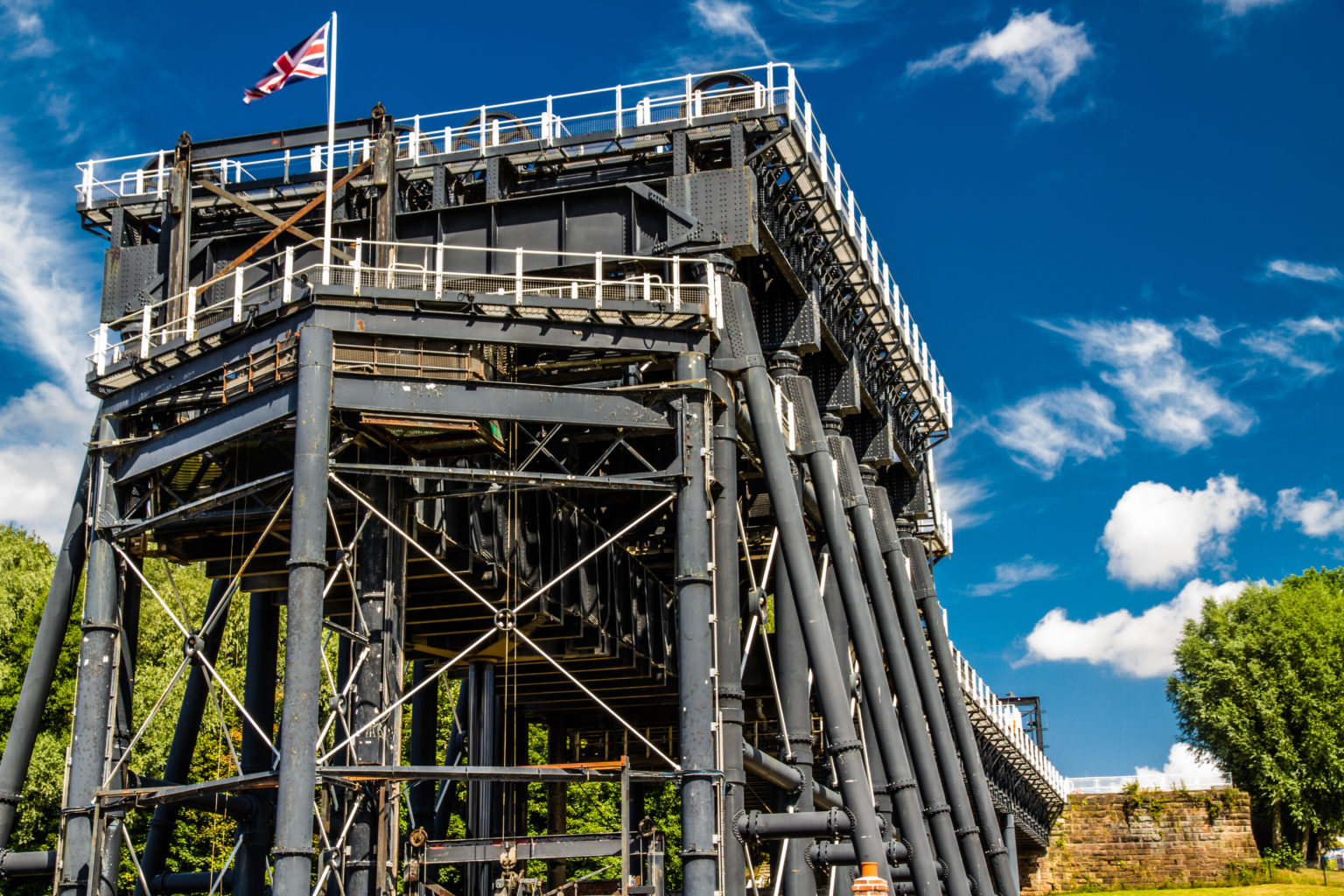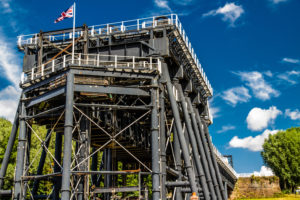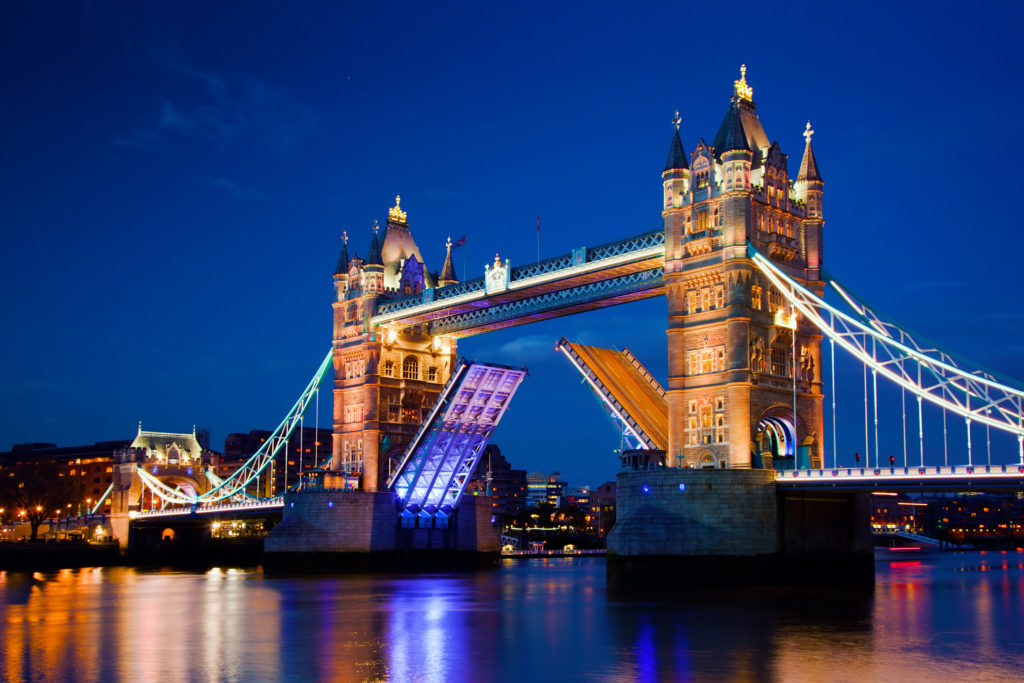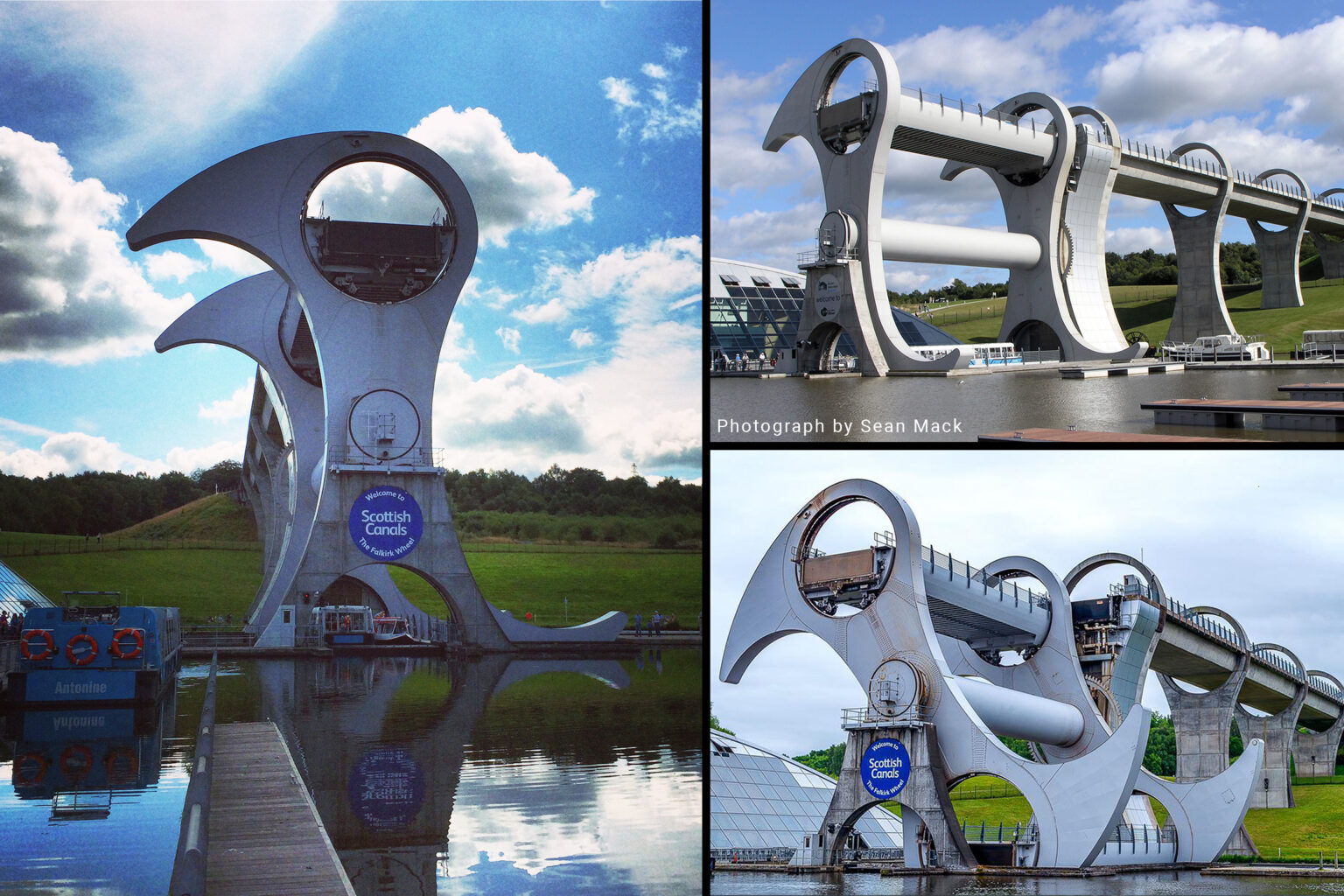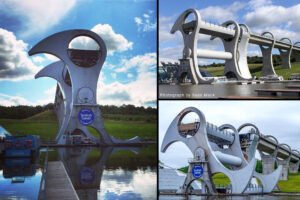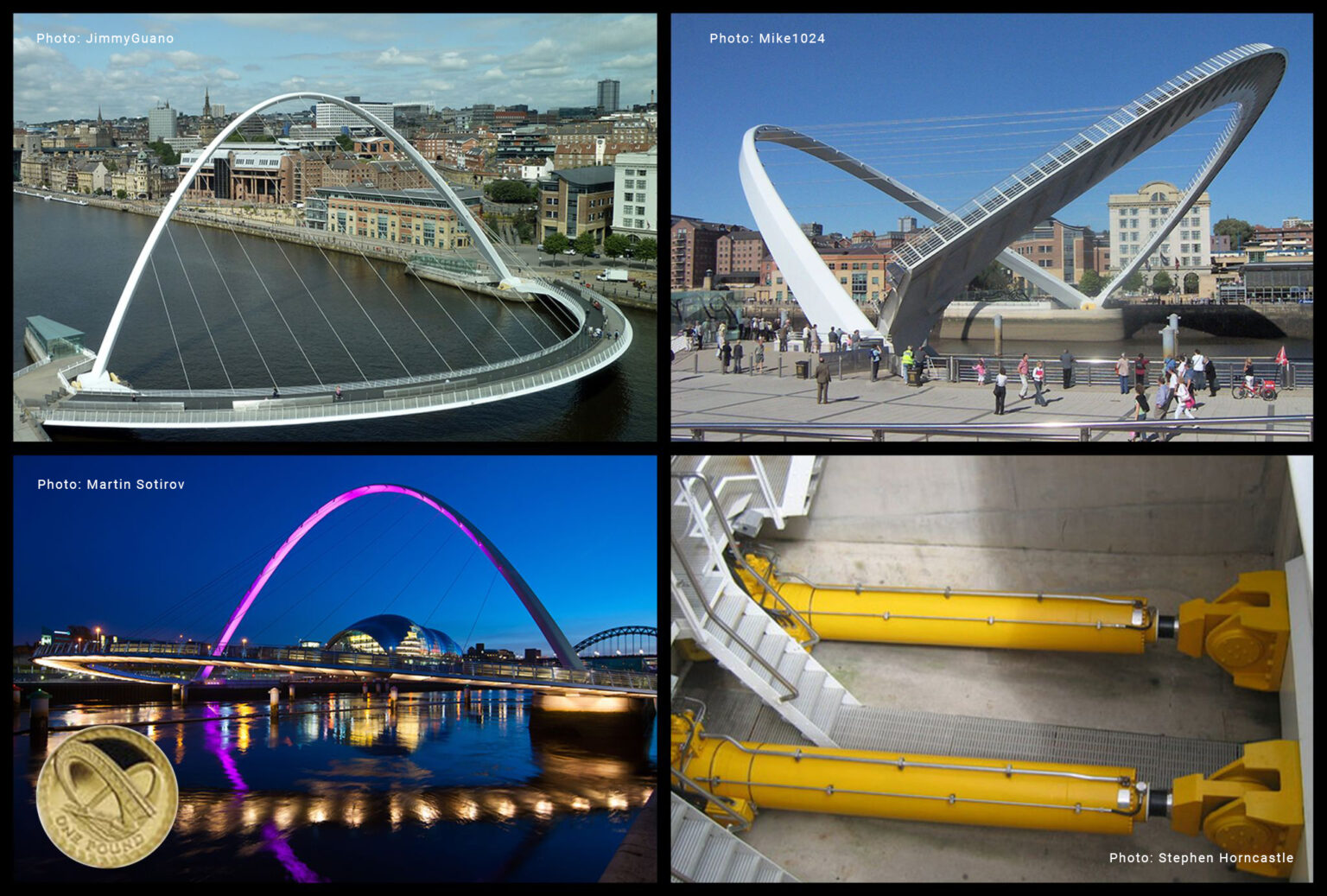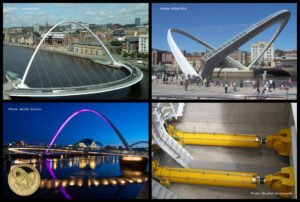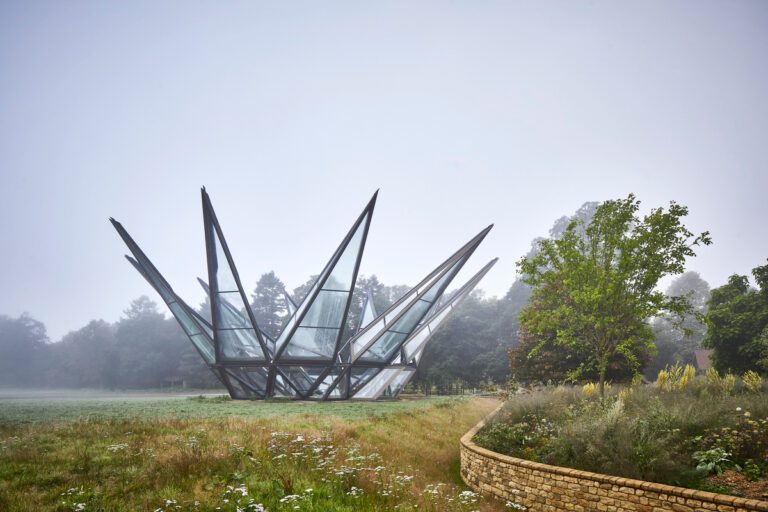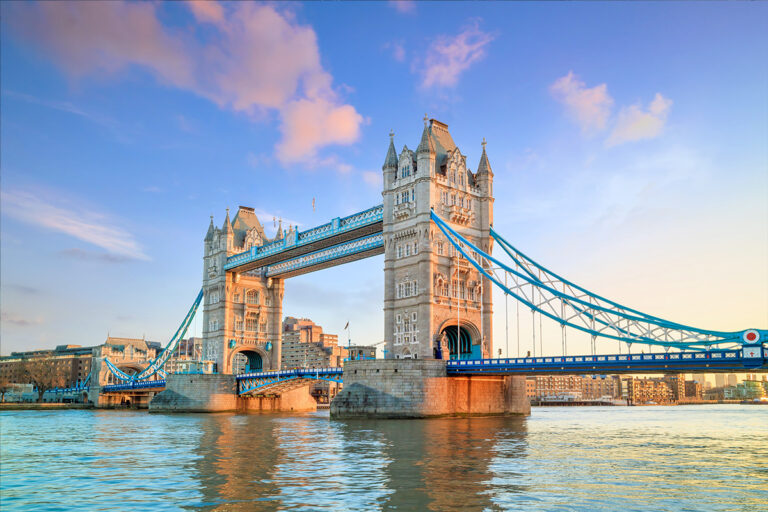The second of the UK’s two boat lifts – and the only rotating boat lift on the planet – the Falkirk Wheel is a true icon among modern hydraulic landmarks. Located in central Scotland, this 21st-century engineering marvel connects the Forth & Clyde Canal with the Union Canal, replacing a historic flight of 11 locks.
The wheel features two equally sized gondolas mounted on opposite sides. Thanks to Archimedes’ Principle, each gondola always weighs the same – whether it’s carrying boats or just water – ensuring perfect balance. This ingenious design means the ten hydraulic motors powering the rotation don’t need to exert much force to lift the 600-tonne gondolas. In fact, each lift uses just 1.5 kWh of energy – roughly the same as boiling eight kettles!



